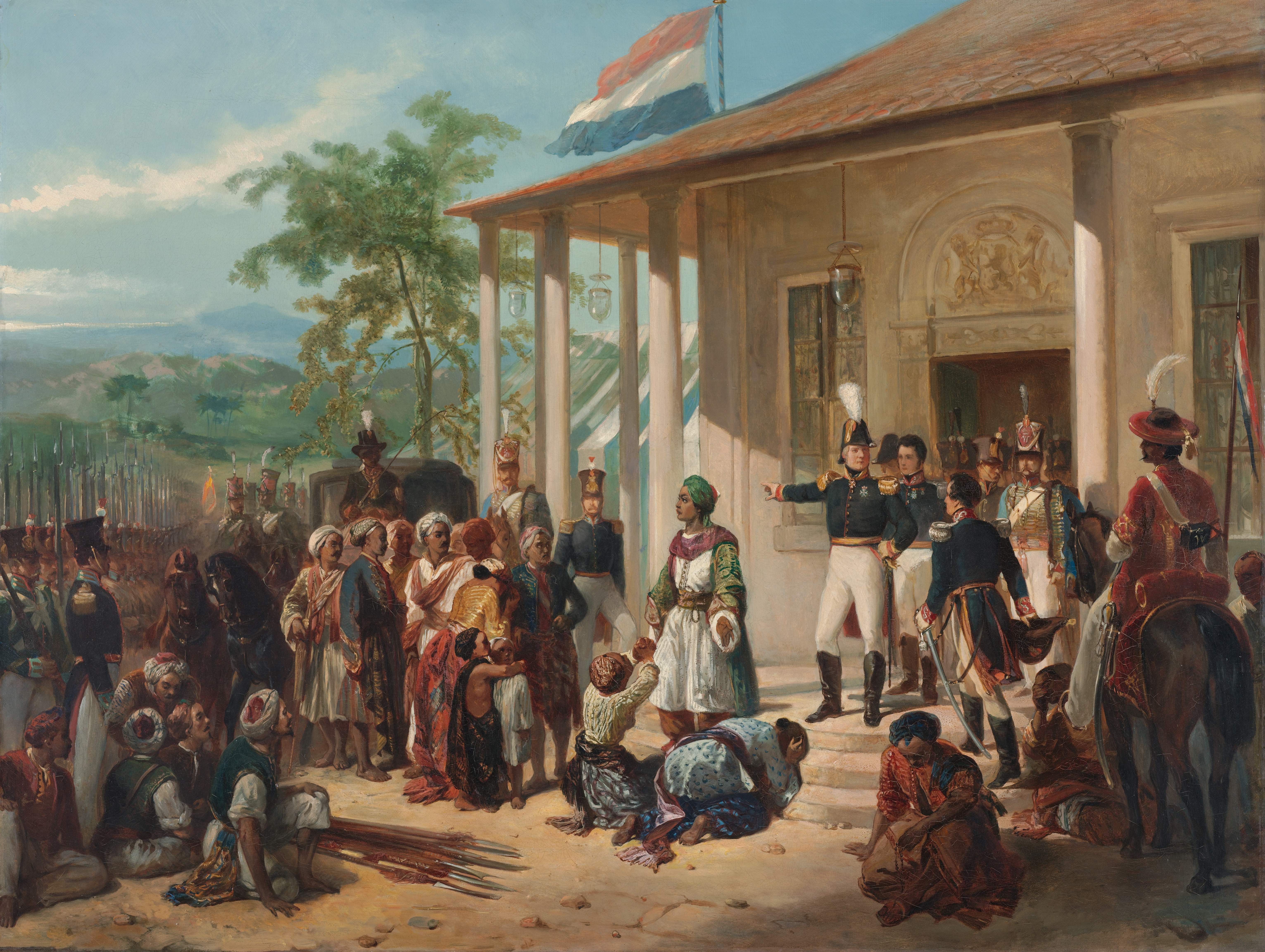If you are Indonesian people, and you know an artist who named Raden Saleh, you should be proud. Raden Saleh is one of the greatest-ever Indonesian artist who have described about Indonesia's struggle for Independence. Because he was a painter, he tells of the struggle of Indonesia is not through writing, but painting artwork. One of his materpiece artwok is Penangkapan Pangeran Diponegoro.
Then there is the actual painting, of legendary independence figure Prince Diponegoro getting arrested by Dutch colonial authorities after they invited him for peace talks. The importance of Penangkapan Pangeran Diponegoro to the culture and nationhood of Indonesia is hard to overstate.
Just at first glance, the painting churns up emotions tied to the colonial era of the Dutch East Indies. The tension in the painting burns – and it is meant to. It shows the protagonists of the anti-colonial Java War - the Dutch general Hendrik Merkus De Kock and the Indonesian Prince Diponegoro.
Raden's work was in reaction to that of Dutch artist Nicolaas Pieneman. Pieneman painted The Submission of Prince Dipo Negoro to General De Kock in 1835. That work was commissioned by the De Kock family.On seeing it, Raden decided to paint a different version of events. His was finished in 1857. Here are both below.




There are two types of paintings with related story, but different narratives. And Raden's depiction was far closer to the truth.
- Prince Diponegoro never surrendered
In Raden Saleh’s painting, we can see that he was set up. Based on history of Java War,the Dutch asked Diponegoro to come and talk about an opportunity to end the war. But when Diponegoro arrived, the Dutch arrested him. Raden's view and the Pieneman's are opposite. In Raden Saleh’s painting, Diponegoro’s face looks tense as he is overwhelmed with anger by the betrayal. But in Pieneman’s painting, the prince’s face is plaintive.
- The Dutch officers' heads are slightly bigger
This show Raden’s feelings towards the Dutch and his anger at what they did to Diponegoro. Standing at Diponegoro’s side is his captor, De Kock. But in Pieneman's, in Diponegoro’s right there’s a man identified as the son of the prince. At the prince’s feet, the kneeling woman is possibly Raden Ayu Retnaningsih, Diponegoro’s wife.
- There are at least four Raden Saleh’s faces in the painting.
If you have a keen pair of eyes, you must have noticed four men with the same face and fashion: they have moustaches and wear blangkon (Javanese headdress for men). According to Palace Artworks curator Mikke Susanto, those faces are those of the painter himself, suggesting Raden was Diponegoro’s supporter.
Look carefully, which one is closest to the truth?
- The painted situation is very accurate
Raden Saleh is known for his attention to detail. He even painted a gemstone ring in one of Diponegoro’s supporter’s finger and paid great attention to the intricate patterns of the Indonesian and Dutch clothes. He even painted Mount Merapi and Merbabu in the background.
On the other hand, Pieneman’s painting showing that the painter has never been to the Dutch East Indies. He depicts Indonesians with Arabic faces, which have very different characteristics to Javanese people.
In the past, painting was the easiest way to describe a stroy. That's because the people of Indonesia at that time were illiterates, so the visual story is important for the next generation to understand.
Through Raden Saleh's paintings, we know that the independence of Indonesia was not obtained in an easy way and in a short time. But through a very long struggle and many sacrifices.
Sumber : brilio
Sumber Gambar : jakartavenue
Cek berita, artikel, dan konten yang lain di Google News













